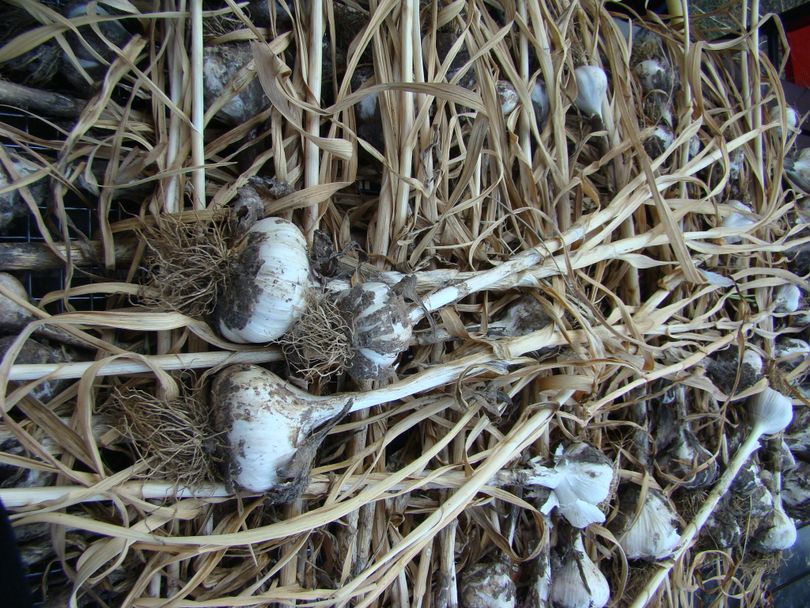Seed Saving—July Urban Farm Challenge

I was pretty happy about July’s Urban Farm Challenge. I’ve never saved my own seed before, but have always wanted to--the challenge was a good push for me to do something new and sustainable. For the most plants it doesn’t seem that difficult.
The easiest seeds to save? Garlic. To save garlic seeds, just save head or two of the garlic you harvest and pull the cloves apart to plant in the fall.
In my reading this month I did discover something new about saving garlic to replant. Garlic adapts itself to the soil it is planted in, so by saving your own garlic to plant each year, you’ll be developing garlic that is specifically suited to grow well in your soil. There’s something almost magical about that—local farming really is best.
Peas, beans, and greens—plants that form seedpods are also fairly simple. Pick the best looking pods and dry them out of the sun—in the garage, pantry, or shed if you have one. When they are fully dry, just remove the seeds from the pod and store them. I have some peas and beans drying in my garage.
The more difficult to save are tomato—you have to ferment the seeds to dissolve the anti-germination coating around the seeds, then dry them before they’re ready to store for next spring’s planting. My tomatoes aren’t ripe yet, so I haven’t started the process of saving those seeds, but I’ll write about my experience when I can. I do know that you should save the seeds from the fruit you are happiest with (you can still eat the rest of the fruit, you’ll just need to scrape the seeds out first)—the earliest, the biggest, the most flavorful, etc.
Pepper seeds do need to be separated from the membrane, but then only need to be dried after removal, not fermented like tomato seeds. I have some pepper seeds drying right now from my earliest banana and Serrano peppers.
Squash seeds also seem fairly simple to save. Winter squash seeds just need to be removed and dried; summer squash need a bit more attention—pick the squash and let it sit outside for a few days to make the removal of the seeds easier. A larger squash is also better. The difficulty with squash is cross-pollination. Because squash depend on insects to pollinate the fruit, cross-pollination is pretty common. From what I’ve read, you need to look at the Latin name of the varieties you’ve grown to see if you’ll have a cross-pollination problem. Varieties with the same second name will cross-pollinate if planted near each other. I have some pumpkins planted by themselves that I’ll try, and some butternuts that might be cross-pollinated, but I’m going to give it a shot.
For more about seed saving, check the Sustainable Eats post for the challenge.
What seeds will you save this year?
